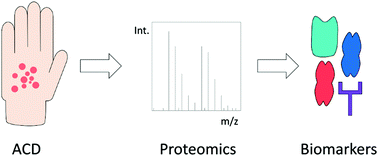Application of proteomics in the elucidation of chemical-mediated allergic contact dermatitis
Abstract
Allergic contact dermatitis (ACD) is a widespread hypersensitivity reaction of the skin. The cellular mechanisms underlying its development are complex and involve close interaction of different cell types of the immune system. It is this very complexity which has long prevented straightforward replacement of the corresponding regulatory in vivo tests. Recent efforts have already resulted in the development of several in vitro testing alternatives that address key steps of ACD. Yet identification of suitable biomarkers is still a subject of intense research. Search strategies for the latter encompass transcriptomics, proteomics as well as metabolomics approaches. The scope of this review shall be the application and use of proteomics in the context of ACD. This includes highlighting relevant aspects of the molecular and cellular mechanisms underlying ACD, the exploitation of these mechanisms for testing and biomarkers (e.g., in the context of the OECD's adverse outcome pathway initiative) as well as an outlook on emerging proteome targets, for example during the allergen-induced activation of dendritic cells (DCs).

- This article is part of the themed collection: Spotlight on Systems Toxicology


 Please wait while we load your content...
Please wait while we load your content...